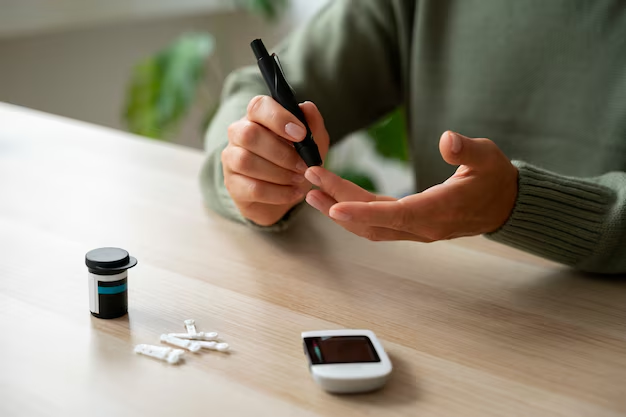Understanding How to Effectively Measure Your Diabetes Levels
When it comes to managing diabetes, monitoring your blood glucose levels is crucial. Accurate and consistent measurements not only help in crafting a personalized treatment plan but also prevent potential complications. If you're navigating this process, you're likely seeking clarity on how to keep a close watch on your diabetes levels. This guide will walk you through the essentials, offering practical solutions to make living with diabetes a bit more manageable.
Essential Tools for Diabetes Measurement
Glucometers: Your Daily Companion
A glucometer is a handheld device that allows you to measure your blood sugar levels wherever you are. It's simple: prick your finger with a lancet, place a drop of blood on a test strip, and insert it into the glucometer. Within seconds, you'll get a reading.
- Pros: Portable, convenient, quick results
- Cons: Requires frequent purchases of strips and lancets
Continuous Glucose Monitors (CGMs): The Advanced Solution
For those looking for less invasive options, continuous glucose monitors are worth considering. These devices are worn on the body and provide real-time data by reading glucose levels from interstitial fluid.
- Pros: Continuous monitoring, reduces need for finger pricks
- Cons: Higher initial costs, may require periodic sensor replacement
A1C Tests: The Long-Term Snapshot
The A1C test measures average blood glucose levels over the past two to three months. Conducted by a healthcare professional, this test provides essential insight into your glucose control.
- Pros: Long-term insight, helps in assessing treatment effectiveness
- Cons: Not a substitute for daily monitoring
Practical Tips for Accurate Measurement
- Consistency is Key: Take your measurements at the same time each day.
- Stay Informed: Keep track of your diet, exercise, and stress levels, as they can impact results.
- Follow Protocol: Ensure devices are calibrated and use strips before their expiration date.
Expanding Your Financial Resources
Diabetes management can be costly. It's important to know that various financial assistance programs can support your health journey. Accessing these resources not only ensures you get the best care possible but also alleviates the financial burden.
Government Aid and Financial Assistance
- Medicare/Medicaid: Offers coverage for glucometers and test strips.
- Supplemental Nutrition Assistance Program (SNAP): Provides funds for purchasing nutritious food.
Debt Relief and Credit Options
- Medical Debt Forgiveness Programs: Some hospitals offer programs to help forgive outstanding medical bills.
- Credit Counseling Services: Explore options to manage and consolidate existing debts.
Educational Grants
- Diabetes Education Programs: Many organizations offer free or low-cost education on managing your condition.
Helpful Financial & Educational Resources
- 📅 Medicare & Medicaid: Coverage options for essential diabetes management tools.
- 💸 SNAP: Financial aid for nutritious diet support.
- 🏥 Medical Debt Programs: Opportunities for alleviating medical expenses.
- 🏦 Credit Counseling: Guidance on managing chronic condition-related debts.
- 🎓 Diabetes Programs: Educational opportunities for better health management.
Remember, effectively managing diabetes involves more than just measuring glucose levels—it's about integrating practical tools and financial resources into your life. By staying informed and utilizing available aid, you can alleviate some of the economic pressure and stay on top of your health.
